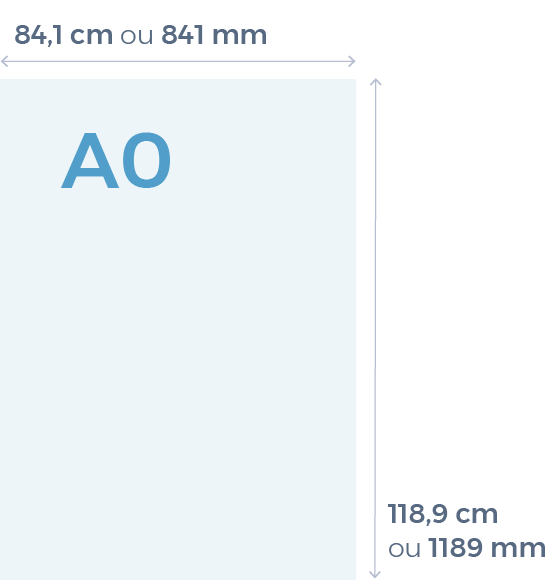Are you tired of constantly struggling with getting your paper to fit in your printer or trying to figure out the perfect size for your next project? Look no further because the A4 format millimeter is here to save the day. In this ultimate guide, we will dive into everything you need to know about the A4 format in millimeters, including its history, uses, and FAQs.
History of A4 Format Millimeter

The A4 format was first introduced in 1975 by the International Organization for Standardization (ISO). It is part of the ISO 216 standard, which also includes A3, A5, and other paper sizes. The A refers to the width of the paper, while the number represents the length. A4 has a width of 210 millimeters and a length of 297 millimeters, making it slightly taller and narrower than the popular US letter size (8.5 x 11 inches).
The A4 format was initially based on the German DIN 476 standard, which was developed in the 1920s. The goal was to create a standard paper size that could be easily scaled up or down without affecting the aspect ratio. This would make it easier for businesses and individuals to exchange documents and drawings without worrying about compatibility issues.
Uses of A4 Format Millimeter

A4 format millimeter is the most commonly used paper size in the world, with over 80 countries adopting it as their standard. It is widely used for printing documents, such as letters, reports, and forms, due to its compact size and easy handling. The A4 size is also compatible with most printers, making it convenient for everyday use.
Apart from printing, A4 format millimeter is also popular in the design and art world. Its dimensions are ideal for creating brochures, flyers, and other marketing materials. The A4 size is also commonly used in sketchbooks, allowing artists to work on a standard size canvas and easily scan their work for digital use.
Advantages of A4 Format Millimeter

- Easy to handle: The A4 format is a popular choice due to its compact and manageable size. It is easy to carry around and fits perfectly in most briefcases and bags, making it convenient for professionals on the go.
- Cost-effective: A4 paper is cost-effective as it can be easily cut into two A5 sheets or four A6 sheets, which are also commonly used sizes. This reduces waste and saves money in the long run.
- Compatible with international standards: As mentioned earlier, over 80 countries have adopted the A4 format as their standard paper size. This makes it easy to exchange documents and drawings with international partners without worrying about compatibility issues.
- Versatile: A4 paper can be used for a variety of purposes, from printing documents to creating marketing materials and artwork. Its dimensions make it suitable for various applications, making it a versatile choice for different industries.
- Environmentally friendly: Due to its standard size, A4 paper is easily recyclable, reducing the impact on the environment. It is also commonly made from sustainable sources, making it an eco-friendly choice.
- Perfect for organization: The A4 format is ideal for organizing files and documents, as it fits perfectly in standard filing cabinets and folders. Its size also makes it easy to read and navigate through multiple pages.
How to Measure A4 Format in Millimeters

Measuring A4 format in millimeters is simple. The width is always 210 millimeters, while the length is 297 millimeters. To get a better understanding of the size, you can visualize it as a rectangle, with the longer side being the length and the shorter side being the width.
If you don’t have a ruler or measuring tape, you can also estimate the size using everyday objects. For example, the A4 format is roughly the size of an iPad or a magazine cover.
How to Convert A4 Format Millimeter to Inches
If you’re used to working with inches and need to convert A4 measurements, it’s a straightforward process. One inch equals 25.4 millimeters, so to convert from millimeters to inches, simply divide by 25.4. For example, to convert the A4 length of 297 millimeters to inches, you would divide 297 by 25.4, giving you a length of approximately 11.69 inches.
Common Misconceptions About A4 Format Millimeter
Despite its popularity, there are still some misconceptions about the A4 format in millimeters. Let’s debunk some of the most common ones:
- A4 paper is only used in Europe: As mentioned earlier, A4 paper is widely used all over the world, with over 80 countries adopting it as their standard paper size.
- A4 is the same as US letter size: While the dimensions of A4 and US letter size are similar, they are not interchangeable. A4 paper is slightly taller and narrower than US letter size, making it incompatible for printing and other uses.
- A4 is only used for printing documents: While A4 is popular for printing documents, it is also commonly used for various design and art projects, such as creating brochures, flyers, and sketches.
- A4 paper is not readily available in the US: Due to the widespread use of A4 paper around the world, it is readily available in the US, both online and in physical stores.
FAQs About A4 Format Millimeter
Q: Is A4 paper size the same as legal size?
A: No, A4 paper is not the same as legal size. Legal size is 8.5 x 14 inches, while A4 is slightly taller and narrower at 8.27 x 11.69 inches.
Q: Can I use A4 paper in my printer?
A: A4 paper is compatible with most printers, but it’s always best to check your printer’s manual to ensure compatibility.
Q: What is the weight of A4 paper?
A: The weight of A4 paper varies depending on its thickness and purpose. It can range from 80 grams per square meter (gsm) for regular printing paper to 350 gsm for cardstock.
Q: Is A4 the only paper size in the ISO 216 standard?
A: No, there are multiple sizes in the ISO 216 standard, including A3, A5, B4, and more.
Q: How did the A4 format millimeter get its name?
A: The A4 format got its name from the German DIN 476 standard, which stands for “Deutsche Industrie Norm” (German Industrial Standard).
Conclusion
In conclusion, the A4 format millimeter is a widely used paper size that has stood the test of time. Its dimensions make it suitable for various purposes, making it a versatile choice for businesses and individuals alike. With its compact size, cost-effectiveness, and compatibility with international standards, it’s no surprise that A4 paper remains a popular choice for everyday use. So next time you’re struggling to fit your paper in your printer or trying to find the perfect size for your project, remember the trusty A4 format millimeter.